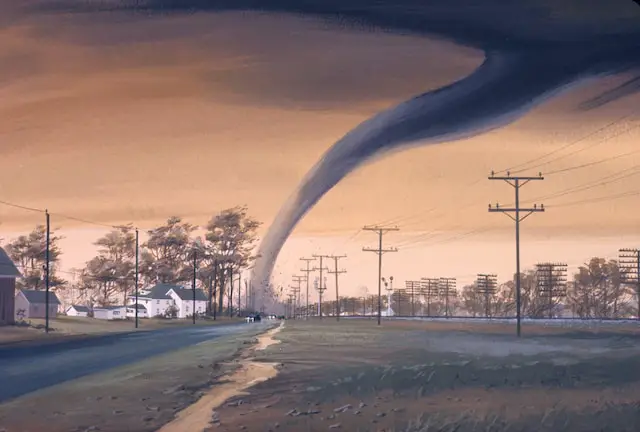Tornadoes are powerful, rotating columns of air that extend from the base of thunderstorms to the ground. They are capable of causing significant damage and loss of life, making them one of the most destructive natural phenomena on the planet. The duration of a tornado can vary widely depending on several factors, including the size and strength of the storm, terrain, and atmospheric conditions.

Size and Strength of the Storm
One of the most significant factors that can affect the duration of a tornado is the size and strength of the storm that produces it. Tornadoes are often associated with severe thunderstorms, which are characterized by high winds, hail, and lightning. The strength of a thunderstorm is usually measured using the Enhanced Fujita Scale (EF Scale), which ranges from EF0 (the weakest) to EF5 (the strongest). Typically, the stronger the thunderstorm, the longer the tornado it produces is likely to last.
Tornadoes that are produced by weaker thunderstorms tend to be relatively short-lived, lasting for just a few minutes or less. In contrast, stronger tornadoes can last for several hours, and in some cases, even longer. For example, the tornado that struck Joplin, Missouri, in 2011 lasted for more than 20 minutes and caused widespread devastation.
Terrain
The terrain over which a tornado passes can also affect its duration. Tornadoes that occur over open terrain, such as fields or flat prairies, tend to last longer than those that occur over more rugged terrain, such as mountains or hills. This is because the open terrain allows the storm to maintain its strength for a longer period of time, while rugged terrain can disrupt the storm’s circulation and cause it to dissipate more quickly.
In addition to the type of terrain, the surface features of the land can also play a role in tornado duration. For example, urban areas with numerous tall buildings can disrupt the wind flow and weaken a tornado. On the other hand, tornadoes that pass over bodies of water or wetlands can gain strength and last longer due to the increased moisture in the air.
Atmospheric Conditions
The atmospheric conditions in the area where a tornado occurs can also affect its duration. Tornadoes are typically associated with certain weather patterns, such as cold fronts, warm fronts, and low-pressure systems. If these patterns are strong and persistent, they can help sustain the tornado for a longer period of time. However, if the weather patterns weaken or shift, the tornado can quickly dissipate.
Forecasting Tornado Duration
While it is challenging to predict the exact duration of a tornado, meteorologists use a variety of tools and techniques to forecast its potential strength and duration. One of the most important tools is radar, which can detect the rotation and movement of storms in real-time. Doppler radar, in particular, is highly effective at detecting tornadoes, as it can detect the rotation of the winds within the storm.
In addition to radar, meteorologists also use computer models to simulate the behavior of storms and predict their potential strength and duration. These models take into account a wide range of factors, including atmospheric conditions, terrain, and the strength of the storm, and can help forecasters identify the areas that are most at risk for tornadoes.
Safety Tips
Regardless of how long a tornado lasts, it is important to take steps to protect yourself and your family if one is approaching your area. Here are some important safety tips to keep in mind:
- Stay informed: Monitor local weather reports and keep up-to-date with the latest information on tornado warnings and watches.
- Have a plan: Have a plan in place for where you and your family will go if a tornado approaches. This should include identifying a safe room or shelter, such as a basement or interior room without windows.